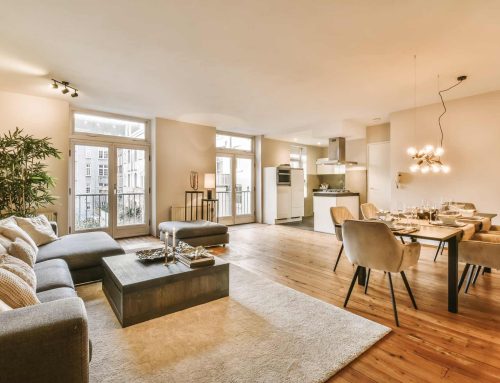When purchasing replacement windows and doors, it is important to consider every aspect of the product before making a decision on them. Not only do these products add to the overall aesthetic of your home, but they also provide a number of unique benefits that could save you time and money. In addition, getting the right windows for you will boost the structural integrity of your home, its overall security and its energy efficiency. Needless to say, throughout the process of purchasing new windows, you must be attentive and aware of what you are going to invest in. If you are having a bit of trouble with choosing the right one, here are a few tips of what you should look for when buying new windows.
Framing Material
When it comes to selecting windows replacements for your home, the first factor to think about is the appropriate frame material for your needs. With each material, there are several things to consider, such as aesthetics, resilience, and insulating capabilities. When choosing a set of windows, you have four basic frame materials to pick from: wood, fibreglass, vinyl, and aluminium.
Wood
Some of the finest windows for house installation include wooden frames, which give the natural appeal that most homeowners desire. Wood frames, being a natural substance that has been used in construction for ages, provide insulation and often survive numerous generations of residents at a specific location. Wood may be painted or varnished, making it suitable for a broad range of colour schemes and interior designs.
Fibreglass
Fibreglass, a sturdy and visually diversified material, is one of the latest possibilities that has been created for window frames in the industry. Because of its ability to simulate the aesthetic of other materials, like wood, fibreglass is popular among modern homeowners. Fibreglass frames are weather-resistant and provide enough insulation in a range of situations. Unlike wood, fibreglass does not require painting or coating and preserves its natural colour.
Vinyl
Vinyl, which is commonly found around the window glass of contemporary homes and structures, is popular among homeowners who like a sleek, polished aesthetic for their window frames. Vinyl, like fibreglass, does not require painting, coating, or maintenance. Many homeowners also prefer vinyl because of its insulating properties, which enable them to conserve energy. However, vinyl is prone to degrade over time when exposed to direct sunlight.
Aluminium
Aluminum window frames were virtually as common as wooden ones for many decades. While wood is still a big favourite amongst the general public, metal has mostly gone out of favour due to the development of fibreglass and vinyl. Although they aren’t as good of insulators as the other materials above, they are an amazing option to improve the aesthetics of your home.
Style
The style is the second factor to consider when purchasing windows. Different window types offer differing degrees of natural light and ventilation. Window types range from sliding vertically or horizontally to tilting outwardly from the top, bottom, or sides. Here are some of the most common options that most homeowners select.
Single/Double-Hung
Single-hung windows are made up of two parallel sashes that can be fitted either with using grilles or not. The lower sash slides open while the top sash remains closed. The lower sash is lifted internally ahead of the upper sash to open the window. Furthermore, double-hung windows have two horizontal sashes, either equipped with or without grilles, and both panes open. Internally, the lower sash rises in front of the higher sash, but outwardly, the upper sash falls ahead of the lower sash.
Sliding
Sliding windows are made up of two or three vertical sashes. The opening sash slides from left to right rather than up and down. In two-sash setups, the right sash unfolds internally leftward ahead of the fixed left sash. The two end sashes of a three-sash set may move in front of the fixed middle sash.
Casement
Casement sets are made out of a single vertical window equipped with or without grilles that slides outward from one end. The window may be gently cracked to allow for modest draughts or opened to 45-degree angles to allow for better ventilation. Casement windows open using a crank handle that you spin until the desired level of openness is obtained.
Bay
The bay window is a projecting group of three lateral windows that might have or not have grilles. The two side windows protrude at 45-degree angles from the house’s facade, while the central window matches parallel to the wall, making a half-relieved hexagon. With the help of a mechanical handle, the peripheral windows move to an outward tilt, while the central window stays immovable. Bay windows add inside space, which many homeowners utilise for plants, candles, and fixtures.
Energy Efficiency
The ideal windows for house usage are intended to prevent air from passing from the outside and to the inside of a home. As a result, your home will be more comfy throughout the year’s hot and cold seasons. When heat waves hit, the appropriate sort of windows may help to keep you cool by blocking off the heat. Substantial windows help insulate warmth and limit the passage of exterior coldness when wind, snow, and subzero conditions attack.
If your energy expenditures have progressively climbed in previous months, the cause might very well be your windows. If you see draughts flowing in from the margins of a window glass or frame, it is likely that a gap has been created due to age and countless extension and contraction cycles. In the winter, a sturdy pair of windows will retain heat inside and block off surplus heat in the summer.
Ease of Use
Among the most crucial considerations to consider when purchasing windows is their simplicity of usage. A window must open and close effortlessly without requiring any particular physical effort on your part. A window might become more difficult to open and shut over time as a result of expansion and shrinkage of the frames induced by seasonal temperature fluctuations. As a result, it is critical to possess a window that is sufficiently designed to withstand these effects. There can be various reasons as to why your windows may not be functioning properly
For example, some antique homes with hardwood window frames have painted shut windows that are hard to open. The problem is that painted-shut windows might put you in great danger if you ever need to escape your house by a window, for example during a fire and such.
Furthermore, wear can also cause windows to become less functional. When exposed to pests and the outdoors for an extended period of time, the wood on wooden frames can get peeled. Newer wooden frames are sometimes covered with aluminium to guard against mildew and other acidic impacts, but wood requires maintenance to keep it from rotting over time. With that being said wood frames or any type of frame for that matter must be examined after each event of tough weather conditions and should be recoated if necessary for them to remain excellent during your time at your house.
Cost
The cost of a new window is affected by a variety of factors. You must consider the quality, kind, and size of the window you will select when estimating how much you will pay. For instance, the brand of the window is one consideration that will influence the price you will spend for a new set of windows. Some brands are recognised for their superior quality and, as a result, command greater costs than rival brands. Other brands may focus on affordability while they decrease the quality of their materials used in their products.
Another aspect that factors into the cost of your replacement windows are the materials used to make it. For example, windows with wooden frames are often more expensive than their fibreglass and vinyl versions, which are more expensive than most aluminium window frames. Except for aluminium, the principal frame materials all have benefits and are similarly strong and durable. Having said that, wood is frequently seen as the most elegant alternative and is thought to be more valuable. However, a wood-framed window will cost twice as much as a vinyl-framed window.
Another aspect that influences the price of a window is its size, as bigger windows demand more glass and building supplies than their counterparts. For instance, awnings and hoppers are less expensive than bay and bow windows. In addition, windows with a single fixed pane are often less expensive than hanging and sliding windows.
There is just so much that goes into the perfect window replacement for you and your home. There are many factors that you have to consider when buying new windows so it is best that you familiarise yourself with all the possible options. Some things to consider when buying new replacement windows are the framing material that is used, the style of the window, the energy efficiency of the window, the functionality of the window and the cost. By being aware of all of these factors, you are putting yourself in a position to have a less stressful and more efficient search for the right windows for you.




